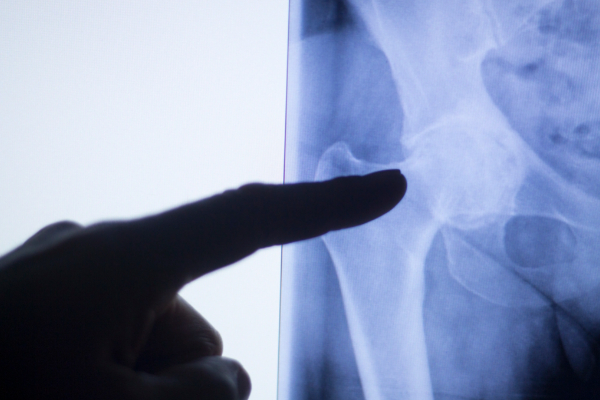Hip Impingement
Hip impingement, also known as femoroacetabular impingement (FAI), is a condition where extra bone growth around the hip joint causes the ball and socket to rub abnormally. This can damage the hip labrum and cartilage, leading to pain, stiffness, and eventually arthritis if left untreated.
This page explains the causes, symptoms, diagnosis, and treatment options for hip impingement in the UK, including both non-surgical care and surgical correction with hip arthroscopy.

What is Hip Impingement?
The hip is a ball-and-socket joint. In FAI, the ball (femoral head) or the socket (acetabulum) develops abnormal shape or overgrowth, causing them to pinch together during movement.
There are three main types:
- Cam impingement – extra bone on the femoral head causes jamming against the socket.
- Pincer impingement – extra bone on the socket rim causes over-coverage of the ball.
- Combined impingement – a mix of both.
Causes of Hip Impingement
FAI often develops due to:
- Structural abnormalities of the hip joint from birth or growth
- Repetitive sports movements (football, hockey, dance, martial arts)
- Previous hip injuries
- Genetic factors
Symptoms of Hip Impingement
Common signs include:
- Groin pain, particularly when sitting or flexing the hip
- Stiffness or reduced range of motion
- Clicking, locking, or catching sensation in the hip
- Pain during twisting, squatting, or running
Diagnosis of Hip Impingement
A consultant hip surgeon will usually recommend:
- Physical examination (assessing hip rotation and impingement signs)
- X-rays to identify bone abnormalities
- MRI scans to assess damage to the labrum and cartilage
- CT scans in complex cases to build a 3D model of the hip
Treatment Options for Hip Impingement
Non-Surgical Management
Initial treatment may include:
- Activity modification (avoiding deep squats or prolonged sitting)
- Physiotherapy to strengthen hip and core muscles
- Anti-inflammatory medication
- Steroid injections for temporary pain relief
Surgical Treatment – Hip Arthroscopy
If symptoms persist, hip arthroscopy (keyhole surgery) may be recommended. This minimally invasive procedure allows the surgeon to:
- Remove excess bone (cam or pincer lesions)
- Repair or trim a torn labrum
- Smooth damaged cartilage
Surgery aims to restore hip movement, relieve pain, and prevent arthritis.
Hip Arthroscopy Procedure for FAI
Before
- Detailed imaging used to plan bone reshaping
- Pre-operative physiotherapy may be advised
- Full discussion of risks and expected outcomes
During
- Performed under general anaesthetic
- Small incisions made around the hip
- Arthroscope inserted to view the joint
- Bone reshaping and labral repair carried out
After
- Most patients discharged the same day
- Crutches used for 1–2 weeks
- Physiotherapy begins soon after surgery
Recovery After Hip Impingement Surgery
Short-Term Recovery
- Walking with crutches for 1–2 weeks
- Swelling and discomfort controlled with medication and physiotherapy
Rehabilitation Timeline
- 0–6 weeks: Restore hip motion, protect labrum
- 6–12 weeks: Strength and stability exercises
- 3–6 months: Return to sport-specific training
- 6–9 months: Full return to sport and high-impact activities

Risks and Complications
Hip arthroscopy for FAI is generally safe, but possible risks include:
- Infection
- Nerve irritation or numbness
- Hip stiffness
- Residual pain if arthritis is present
- Need for revision surgery in rare cases
Why Choose Mr Mark Webb for Hip Impingement Treatment
When you choose Mr Mark Webb for your hip impingement treatment, you can expect:
-
A precise diagnosis using advanced imaging (MRI, CT scans) and specialist tests to identify exactly which type of impingement you have and whether other joint parts (labrum, cartilage) are affected
-
A treatment plan that’s personalised to your anatomy, lifestyle, activity level, and goals (everyday life or sport)
-
Access to minimally invasive arthroscopic techniques to reshape bone (cam or pincer lesions), repair the labrum, and address any associated damage—all while preserving as much healthy tissue as possible
-
Structured rehabilitation programmes designed to restore range of motion, strength, and mobility safely, helping you return to your activities with less pain and better function
-
The best chance of reducing pain, improving hip movement, preventing further joint damage, and preserving long-term hip and joint health
Frequently Asked Questions
What is hip impingement (FAI) and what causes it?
Hip impingement, or femoroacetabular impingement, happens when the hip’s ball and socket (femoral head and acetabulum) rub abnormally because of bone shape abnormalities—like a “cam” deformity (extra bone on the femoral head/neck), a “pincer” deformity (extra bone on the socket rim), or both. These abnormal contacts lead to friction, pain, and over time damage to cartilage or labrum.
What are the symptoms of hip impingement?
Common symptoms include groin or hip pain (especially when you bend, twist, or sit for long periods), stiffness, limited hip motion, clicking or catching sensations in the hip, and discomfort during or after activity. Sometimes symptoms are mild in early stages and worsen over time.
How is hip impingement diagnosed?
Diagnosis usually involves taking your history and symptoms, physical examination (tests to reproduce impingement pain), and imaging: X-rays to see bone shapes, MRI to check soft tissues like labrum and cartilage, sometimes CT scans for detailed 3D view. In some cases, diagnostic injection into the hip may help confirm the source of pain.
Can hip impingement be treated without surgery?
Yes—many people improve with non-surgical treatments first. This includes modifying activities that cause pain, physical therapy to improve hip strength & flexibility, anti-inflammatory medication, and sometimes injections (e.g. corticosteroids). If these don’t relieve symptoms or if there is structural damage visible that is likely to worsen, then surgical treatment may be recommended.
What is recovery like after hip impingement surgery and when can I return to activity or sports?
Recovery varies depending on how much work was done (bone reshaping, labral repair, cartilage work). You’ll typically have a period of reduced weight bearing with crutches, then gradually more activity as pain allows. Physical therapy is key. Many patients can return to everyday activities in a few weeks, but returning to high-impact sports often takes several months (often around 4-6 months, sometimes longer).
What happens if hip impingement is left untreated?
Untreated FAI may lead to progressive damage – labral tears, cartilage wear, increased risk of early osteoarthritis of the hip joint. Over time, pain may worsen, motion may reduce, and joint damage may become more severe and harder to treat.

